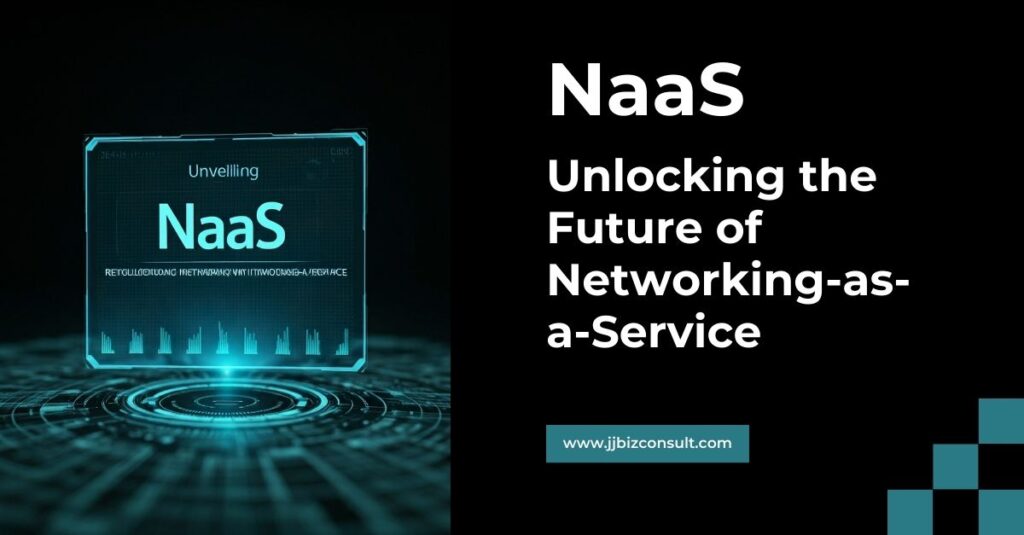
NaaS: Unlocking the Future of Networking-as-a-Service
In the dynamic world of technology, businesses are constantly seeking innovative solutions to enhance efficiency and adaptability. Networking-as-a-Service (NaaS) has emerged as a game-changing approach, redefining how organizations manage network infrastructure. This blog delves into the concept of NaaS, its alignment with the broader “Networking-as-a-Service” model, and its transformative benefits for modern businesses.
What is NaaS?
NaaS, or Networking-as-a-Service, represents a cloud-based model where businesses can access networking services over the Internet without investing in expensive physical hardware. By relying on subscription-based providers, organizations can seamlessly manage network resources while focusing on their core operations.
As digital transformation accelerates across industries, NaaS has become a vital tool. Its flexibility, scalability, and cost-efficiency empower businesses to keep pace with evolving demands and technological advancements.
Exploring Networking-as-a-Service
Networking-as-a-Service is a broad term encompassing various cloud-powered networking solutions, with NaaS standing out as a key example. It simplifies network management by enabling businesses to access tools like virtual private networks (VPNs), firewalls, and network monitoring via a centralized platform.
By offloading complex networking tasks to providers, companies can shift their focus from maintenance to strategic growth. Additionally, seamless integration with other cloud services enhances operational agility and efficiency.
Black Friday – Up to 97% off on Domains
Benefits of Adopting NaaS
Implementing Networking-as-a-Service brings numerous advantages, including:
- Scalability: Dynamically adjust network resources based on demand, ensuring you only pay for what you use.
- Cost Savings: Eliminate hefty upfront investments in hardware and reduce ongoing maintenance expenses.
- Flexibility: Tailor networking services to specific needs, allowing rapid adaptation to market changes.
- Enhanced Security: Providers deliver robust protection with features like threat detection and automated updates.
- Simplified Management: Centralized platforms streamline network oversight, reducing complexity.
Why NaaS Surpasses Traditional Networking
Compared to conventional models, NaaS offers:
- Lower Costs: Avoid large capital expenditures with subscription-based pricing.
- Greater Agility: Quickly scale and adjust resources to meet shifting needs.
- Reduced Complexity: Delegate intricate tasks to providers, simplifying network administration.
- Constant Innovation: Access cutting-edge technologies without frequent upgrades.
Security Features in NaaS
NaaS providers prioritize robust security measures, including:
- Zero Trust Security: Strict identity verification ensures only authorized users and devices gain access.
- Identity Management: Features like multi-factor authentication and role-based access enhance security.
- Automated Protocols: Continuous monitoring, policy enforcement, and incident response mitigate risks.
- Integrated Firewalls and Threat Detection: Strengthen defenses across all network edges.
- Compliance Support: Simplify adherence to regulations like GDPR, HIPAA, and PCI-DSS.
Integrating NaaS with Cloud Services
NaaS seamlessly connects businesses to various cloud platforms, enhancing operational efficiency:
- Simplified Connectivity: Establish direct links to SaaS, PaaS, and IaaS solutions for smoother operations.
- Unified Management: Use APIs for centralized control of network and cloud resources.
- Real-Time Scalability: Adjust bandwidth and resources to meet fluctuating demands.
- Support for Multi-Cloud Strategies: Enable seamless collaboration across different cloud providers.
Real-Time Bandwidth Adjustments
One of Networking-as-a-Service’s standout features is its ability to handle real-time bandwidth adjustments:
- On-Demand Scaling: Quickly adapt to traffic surges without infrastructure changes.
- Automated Resource Allocation: Ensure uninterrupted performance during high-demand periods.
- Self-Service Portals: Allow businesses to independently manage bandwidth and network configurations.
- SD-WAN Integration: Optimize bandwidth usage and prioritize critical applications.
The Future of Networking
NaaS embodies the evolution of Networking-as-a-Service, providing scalable, secure, and cost-efficient solutions for modern businesses. Its integration with advanced technologies ensures a competitive edge in an increasingly digital landscape.
By adopting NaaS, organizations can transform network management, enhance security, and achieve unparalleled operational flexibility. As its adoption grows, Networking-as-a-Service will continue to shape the future of networking.
Real-World examples of Networking-as-a-Service (NaaS)
1. Cisco Meraki
Cisco Meraki offers cloud-managed networking solutions that embody the NaaS model. Businesses can deploy Wi-Fi, security, and IoT solutions without the need for complex hardware setup. This service is widely used by retail chains, educational institutions, and large enterprises for simplified and scalable networking.
2. HPE Aruba Central
HPE’s Aruba Central is a cloud-based network management platform. It provides tools for monitoring, provisioning, and troubleshooting networks remotely. Organizations like hospitals and universities leverage Aruba Central for secure and seamless connectivity across multiple locations.
3. AWS Direct Connect with Megaport
Amazon Web Services partners with Megaport to provide NaaS connectivity solutions. Businesses can use Megaport’s platform to establish private connections between their on-premises environments and AWS cloud resources, ensuring low-latency and high-speed network access.
4. Microsoft Azure Virtual WAN
Microsoft’s Azure Virtual WAN simplifies global connectivity for enterprises. It enables seamless integration with branch offices, remote users, and cloud applications through a centralized, managed networking solution. Companies like Maersk use Azure Virtual WAN for secure, scalable networking.
5. Equinix Fabric
Equinix Fabric is a software-defined interconnection platform that allows enterprises to connect to their desired networks, clouds, and partners globally. This service supports businesses like Netflix, helping them deliver seamless streaming experiences by optimizing data traffic flows.
6. Juniper Networks Mist AI
Juniper’s Mist AI uses machine learning to offer NaaS capabilities for wireless networks. This solution provides predictive analytics, AI-driven automation, and enhanced user experiences, which companies like ServiceNow use to streamline IT operations.
These examples showcase how NaaS is transforming industries by offering flexible, efficient, and scalable networking solutions.
Developing Leadership Skills: A Lifelong Journey
Building a Strong Professional Network: Tips and Strategies





